In his book, Murder by the Prosecution (Wilkinson Publishing) ANDREW L. URBAN reports on murder trials that relied exclusively on circumstantial evidence and how these resulted in convictions – since overturned or under appeal. Through exploring these cases he came to recognise a pattern, secret strategies. He now adds the case of Robert Xie to the three examples in his book.
Many people find it difficult to believe that our criminal justice system is capable of repeated and gross errors. But these examples of murder cases show how the prosecution (protected by professional immunity) sought and secured a conviction by applying the secret strategy, three identical ‘imperatives’ in each case – as outlined in Murder by the Prosecution.
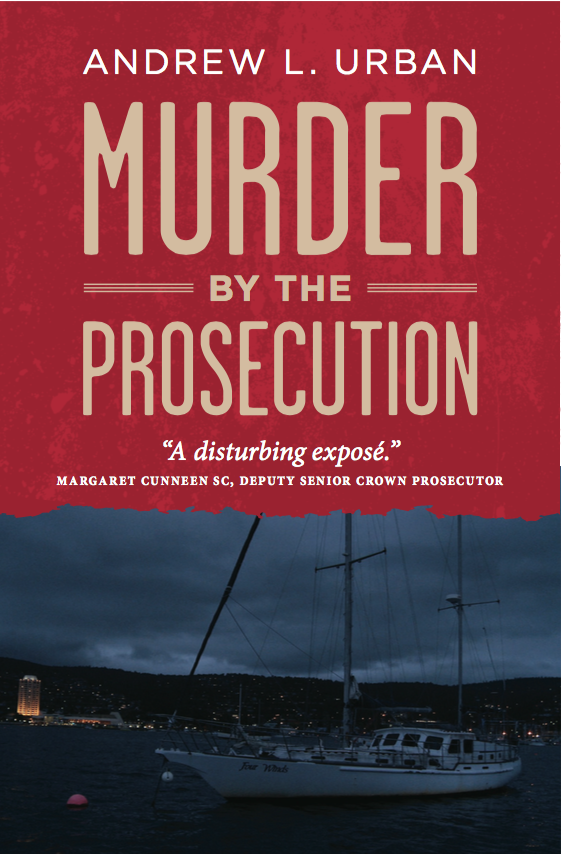
This breakdown shows that scenarios (however implausible) invented by prosecutors – when un-checked by judges – can persuade juries and help secure convictions. It’s rare, but not as rare as we like to think. More than criticisms of judicial decisions alone, these convictions undermine the authority of the criminal justice system.
The trigger for such speculative scenarios is lack of direct evidence, combined with failures at the investigation stage. When police are determined to bring a case against their suspect in a murder case and are unable to produce any direct evidence, there is a scramble for circumstantial evidence which can be manipulated to support a hypothesis. It’s called tunnel vision. Any clues or leads that do not fit the case constructed against the suspect are ignored. The brief to the Director Public Prosecutions is then massaged to fit the charge against the accused.
This is where the prosecutor takes over and has to decide whether to proceed to trial with ‘reasonable and probable cause’ that a conviction can be secured on the basis of the evidence. In some cases, as shown here, that decision can only be substantiated by a creative approach that fills in the missing gaps in the evidence. It means speculating what might have happened, how the accused might have committed the murder – and why. To succeed, this approach requires exceptional skills in story telling and jury psychology. But it is wrong and impermissible. Good judges disallow it.
HOW IT WORKS – THREE IMPERATIVES
Three imperatives to deliver a conviction when there is no direct evidence of murder against the accused:
IMPERATIVE 1
Establish and/or embellish conflict between accused and victim and/or potential motive, however slight.
IMPERATIVE 2
Speculate a scenario describing the murder in detail, even if implausible. ‘Sell’ the story to the jury.
IMPERATIVE 3
Present any forensic and/or expert witness evidence angled to implicate the accused, playing on judge and jury ignorance about forensic and other technical or scientific matters.
FOUR EXAMPLES
IMPERATIVE 1
Establish and/or embellish conflict between accused and victim and/or potential motive, however slight
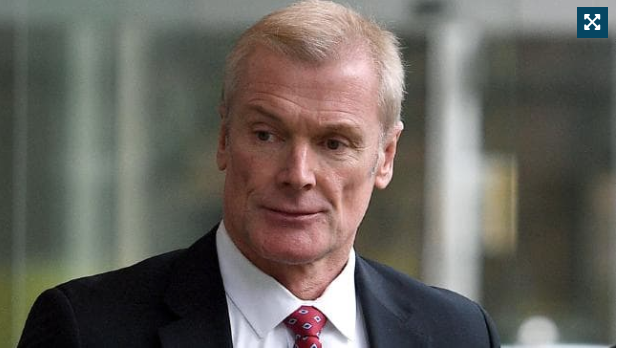
Gordon Wood on Monday, November 18, 2019
Example 1
Gordon Wood case (acquitted on appeal in 2012 four years after 2008 conviction, 17 years after Byrne’s 1995 death)
Caroline Byrne:
The prosecutor (Mark Tedeschi) put it to the jury that Gordon Wood and his girlfriend Caroline Byrne, were in conflict and she was ready to break up. He sought to press this claim with statements from some who knew the couple, although the evidence was not entirely fool proof. He did not reveal to the jury that feeling unwell two days prior to her death, she had sent Gordon Wood a chirpy text message which she signed as ‘your sick chicky babe’.
At the civil trial in March 2017 where Wood (following his successful 2012 appeal) was suing for malicious prosecution, his barrister Barry McClintock produced medical documents that referred to Byrne’s depression and a previous self harm episode. Her depression was an issue at trial, and Tedeschi agreed, saying “It was incumbent on the Crown to disprove suicide.”
McClintock’s last words to Tedeschi were blunt: “I put it to you that whatever purpose you had did not serve the purpose of justice.”
In the Chief Justice’s decision to acquit Wood, he also refers to another motive the prosecution tried to argue: “The … suggestion was that Mr Wood had told Ms Byrne about the shady business dealings of Mr Rivkin, and then determined that he had to get rid of Ms Byrne as part of the cover-up.”
The Chief Justice concluded, “the suggested evidence of a motive involving Mr Rivkin is so thin that it should never have been left with the jury.” He said it was “entirely speculative and internally inconsistent”. Although it meant killing the person he loved, it was said that Mr Wood chose to do this rather than lose his job. “To my mind there was nothing in the evidence which justified the prosecution’s speculation with respect to Mr Wood’s motive.”
There was no evidence that Ms Byrne actually knew any details of any illegitimate dealings or that she had any knowledge which could damage Mr Rivkin. The evidence could never sustain the proposition to say that Mr Wood felt it necessary to kill Ms Byrne to protect Mr Rivkin.”
FOOTNOTE: At Wood’s civil claim of malicious prosecution, Justice Elizabeth Fullerton demolished Mark Tedeschi QC’s prosecution of Gordon Wood for being “disingenuous” and “impermissibly straining for a conviction”. However, she dismissed the claim for malicious prosecution. Wood is appealing that decision.
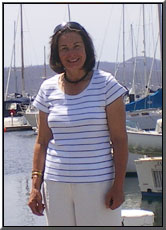
Sue Neill-Fraser, Australia Day2009
Example 2
Sue Neill-Fraser case (new appeal to be heard late 2020, 10 years after conviction)
Bob Chappell
The prosecutor (Tim Ellis SC) put it to the jury that Neill-Fraser and her partner of 18 years, Bob Chappell, were in conflict and ready to break up, just a few weeks after jointly buying the expensive Four Winds yacht. He cited statements by strangers to the couple, the crew who helped sail the Four Winds from its Queensland berth to its new home in Hobart. The notion of them being in conflict was disputed by witnesses who knew the couple over several years, including family.
He also cited evidence about what may have been a quayside quarrel between them on the day of Chappell’s disappearance, which turned out to be false. The quarrel was in fact a disagreement between Chappell and his sister, who was visiting Hobart – and took place the day before.
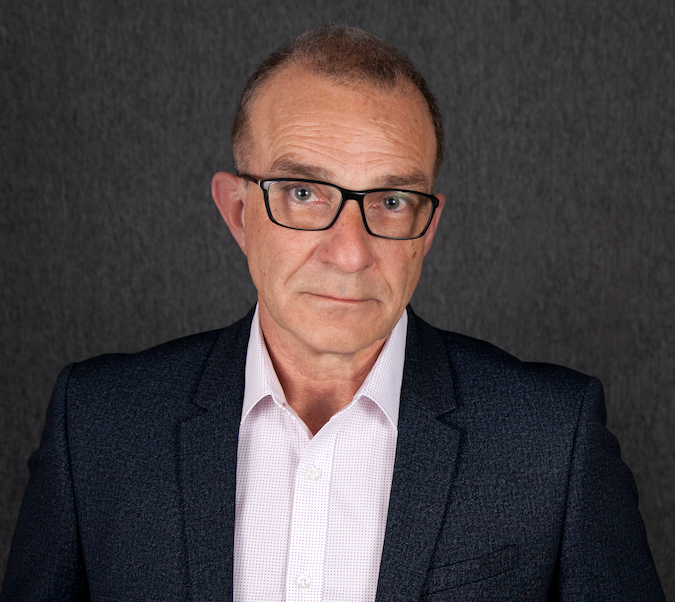
Henry Keogh
Example 3
Henry Keogh case (acquitted on appeal 20 years after conviction)
Anna-Jane Cheney
The prosecutor (Paul Rofe QC) could not find any evidence of a conflict between them so he put it to the jury that Henry Keogh murdered his fiancé in the bath to collect the money from the insurances on her life.
Keogh, an insurance agent, admitted to signing five life insurance policies on behalf of Anna-Jane Cheney. Whereas the prosecution alleged the combined value of $1.15 million was motive for the murder, Keogh claimed that these were submitted to prevent insurance agencies he had established from lapsing, and that the amount eligible to claim was closer to $400,000. The prosecution conceded during the trial that Cheney was aware of at least two of these policies.
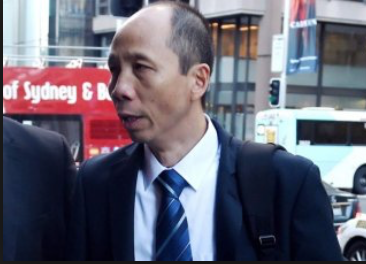
Robert Xie
Example 4
Robert Xie case (appeal heard in June 2020, decision reserved, nine years after arrest, three years after conviction, 11 years after murders)
Detectives on Strike Force Norburn, comprising Homicide Squad and some assistance from the Asian Crime Squad, are struggling to find a motive, according to news reports.
In December 2012, Xie is granted bail by local court magistrate John Andrews, who says the Crown case is not strong. Andrews had noted that the prosecution had described the murder of Xie’s brother-in-law, Min ”Norman” Lin and four members of his family, bludgeoned and strangled in their beds, as a crime of extreme violence and personal hatred but was unable to establish a clear motive for the crimes. ”It was effectively conceded by the prosecutor that there was no evidence of motive.
But by the time the case went to court, the prosecutor had worked up a couple of motives. One, that Robert Xie was jealous of his brother in law’s success. This was shown to be false, but it remained as ‘poison’ in the jury’s mind, no doubt. Another motive put to the jury was that Xie was sexually abusing the teenage daughter (his niece) … and by eliminating her entire family he was free to do so.
IMPERATIVE 2
Speculate on a scenario describing the murder in detail, even if implausible.
Gordon Wood case
The prosecutor (Mark Tedeschi QC) put it to the jury that Wood murdered his girlfriend, Caroline Byrne, by throwing her off the cliff at The Gap, using a ‘spear throw’, carrying her above his head as he took a run up to the cliff edge. There was some uncertainty as to whether she would have been conscious or not, but the prosecution convinced the jury that it was plausible.
Sue Neill-Fraser case
The prosecutor (Tim Ellis SC) put it to the jury that Sue Neill-Fraser murdered Bob Chappell on board their new yacht possibly by hitting him on the head from behind with a wrench. He did not present any evidence to support this speculation. Chappell was missing and his body was never found.
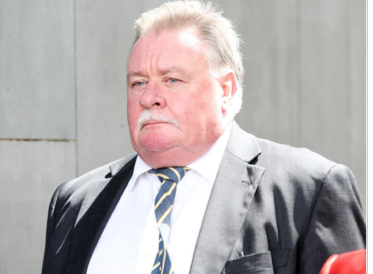
Tim Ellis SC, former DPP of Tasmania
In his closing address to the jury, he said: “She’s walking backwards and forwards and delivers blow – a blow or blows, or maybe stabs him with a screwdriver, I don’t know, he doesn’t look round, and so the body doesn’t have any marks of what you’d expect if someone had come down there, a stranger, intent on doing him harm, the body I suggest would have marks consistent only with being delivered by someone who he knew to be there, who he knew and expected to be behind him.” Ellis further speculated that she must have winched his body up to the top deck, heaved him over the side into their dinghy, rowed it away and dumped his body somewhere in the Derwent. He did not present any evidence to support this speculation.
Henry Keogh case
The prosecutor (Paul Rofe QC) put it to the jury that Keogh murdered Anna-Jane Cheney by lifting her left leg while she was in the bath, causing her to drown. Obviously the prosecution convinced the jury that it was plausible.
Maciej Henneberg, Professor of Anatomy at the University of Adelaide, has stated that it would be impossible to drown someone by holding their legs over their head, as the power of the extensor muscles in a woman’s leg would always be greater than the power which a man could exert through a fingertip grip of the woman’s calf as proposed by Senior Director of Forensic Pathology, Dr Colin Manock.
Robert Xie case
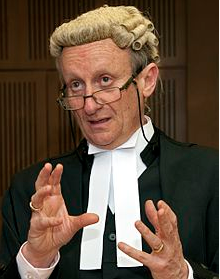
Mark Tedeschi QC
The prosecutor (Mark Tedeschi QC) put it to the jury that sometime after 2 am (when he switched off his computer) Robert Xie got up from his bed 200 metres from the Lin home, without his wife being aware because he had sedated her, went over and bludgeoned the five members of the Lin family to death (One child was on a school trip overseas), then returned to his bed, again without his wife being aware of his movements. He provided no evidence linking Xie to the murder nor for him sedating his wife (other than a feeble attempt at entrapment by a paid informer facing serious charges in jail).
IMPERATIVE 3
Present any forensic and/or expert witness evidence as if it implicated the accused, playing on judge and jury ignorance about forensic and other technical or scientific matters.
Gordon Wood case:
The prosecutor (Mark Tedeschi QC) relied for his speculative suggestion about the method of the murder on the work of expert witness Associate Professor Rod Cross, who had performed experiments to satisfy the prosecution that a strong man could indeed throw a 56 kilo woman (held above him, propelling her by her crotch) far enough so that she land as far out from the cliff as Byrne’s body had been found. (There was no evidence presented to the jury that showed Wood actually did that, only that Cross suggested perhaps he could have.)
In 2012 the Court of Criminal Appeal set aside Wood’s conviction and entered a verdict of acquittal. In his judgement the judge stated that even the most basic elements of the case had failed to be established. In his submissions the prosecutor suggested that the woman may have been thrown by a “shot put throw”. The judge said this proposition “was extraordinary and should never have been made”. The submission was entirely unsupported by any evidence and was “an invention of the prosecutor”. As the judge said, in this and other critical matters, the prosecutor argued for conclusions based on his own speculative propositions. The judge went so far as to ridicule the prosecution’s case: “I am not persuaded that Wood was at The Gap at the relevant time.” He concluded that the verdict of the jury could not be supported having regard to the evidence.
The main witnesses for the prosecution were the investigator, Detective Inspector Jacob, and the expert witness, Associate Professor Rod Cross. They had worked closely with each other, and, according to the Chief Judge at Common Law, they had presented evidence which was either inadmissible or unreliable.
Sue Neill-Fraser case
The prosecutor distributed a photo to the jury which showed the Four Winds dinghy photographed with the extensive blue stain of luminol, a preliminary test for blood and many other substances. (The luminol test on the family car in the Lindy Chamberlain trial turned out to reveal sound deadener not blood.) The confirming test carried out on the dinghy showed no blood. The image shown to the jury was therefore meaningless, but it planted a prejudicial image in the minds of the jury.
On October 13, 2010 during submissions prior to summing up, in the absence of the jury, counsel and the judge conferred.
The transcript (emphasis added):
MR ELLIS SC: The next point is, it was attributed to me that I said it was Mr Chappell’s blood in the dinghy. Now I don’t believe I did.
MR GUNSON SC: Yes, you did.
MR ELLIS SC: Okay – I don’t know why I’d say it
HIS HONOUR: – Well –
-
MR ELLIS SC: – because I’ve never believed it.
HIS HONOUR: In opening.
MR GUNSON SC: Yeah.
MR ELLIS SC: Oh in opening –
MR GUNSON SC: Yes, in opening.
MR ELLIS SC: Oh okay, I abandon that, if I said it in opening.
HIS HONOUR: All right. Well I’ll do nothing about that point. What’s the next point?
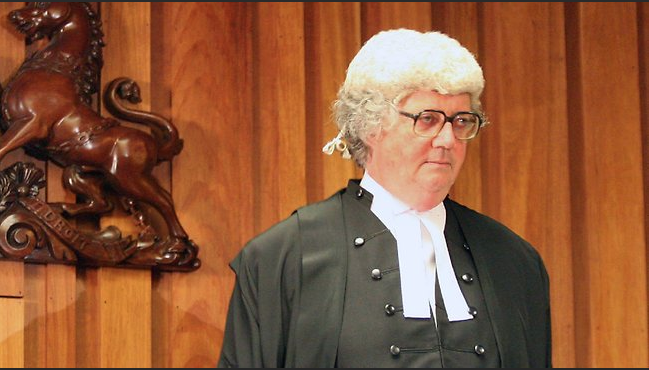
Justice (now Chief Justice) Blow
Given that both the judge and defence counsel Gunson had got the wrong – and prejudicial – impression, it was highly likely that the jury did, too. Perhaps His Honour could have mentioned this exchange to the jury … or have Ellis do so.
Henry Keogh case
Two days after Anna-Jane’s death, South Australia’s chief forensic pathologist Dr Colin Manock performed an autopsy which didn’t raise any concerns. But after hearing about the suspicions over insurance policies, he examined the body again. His re-examination lead him to form a “grip theory” — which he says explained faint bruises on the outside of her left leg. He said there was a key thumb bruise on the outside of the left leg and suggested her legs had been lifted over her head in the bathtub which ended in her being drowned.
This was the evidence on which the prosecution built a hypothesis to put to the jury. There was no direct evidence against Keogh. The scenario of how the murder was physically committed was accepted as credible. The method of drowning proposed by Manock was not possible when the physical location of the bath against the wall was considered, requiring an attacker to be positioned where a wall was located. Manock did not visit the scene until three months after the drowning theory was proposed.
In 2009 Manock recanted his evidence, and acknowledged that evidence he gave at trial to the effect, at least by implication, that his microscopic examination supported the conclusion that the medial side mark was a bruise, was wrong.
The error proved catastrophic for Keogh; the bruise Manock identified as the grip marks could not have been inflicted at the time of death, as haemosiderin was later found in the relevant tissue sample. As the appeals court heard, “haemosiderin is a by-product of the healing process consequent on a person suffering, inter alia, a bruise or some type of tissue lesion. However, haemosiderin will be detectable no earlier than 24 hours after the bruise or lesion to which it relates is suffered.”
In his 2004 report on the case, Emeritus Professor, Institute of Medical & Veterinary Science, University of Adelaide, Barrie Vernon Roberts concluded: “My preference as an hypothesis for the sequence of events leading to Ms Cheney’s death is that she lost consciousness after having sustained an initial fall in blood pressure due to blockage of a small artery in her heart or during a faint. While falling backwards from an erect position she struck her head on the bath before sliding under the water and drowning while unconscious.” The appeal judges agreed.
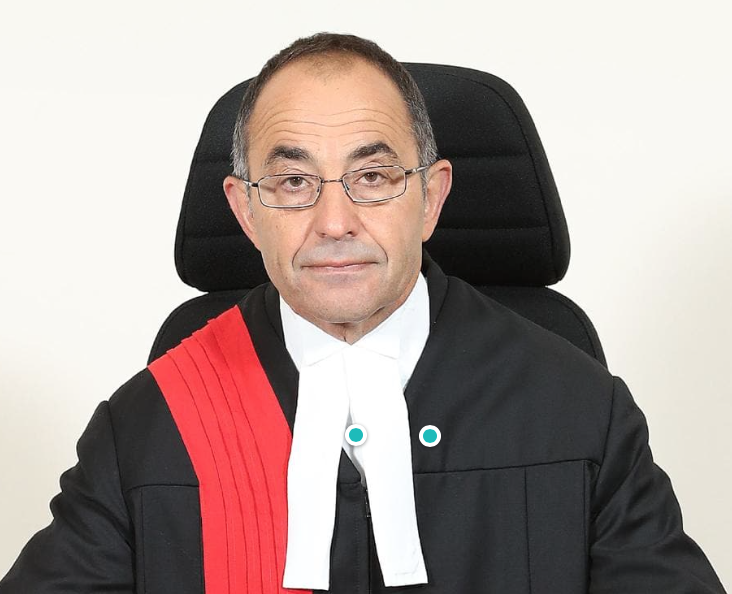
Chief Justice Chris Kourakis
Contrary to legal rules, the Vernon Roberts exculpatory report to the Crown was not disclosed to Keogh’s legal team for a decade – until his final appeal began in 2014 and he was still in prison. No-one has been held accountable. (The Solicitor General at the time was Chris Kourakis QC, who became Chief Justice of South Australia in 2012.)
Robert Xie case
The prosecutor (Mark Tedeschi QC) put it to the jury that DNA found on the Xie house garage floor was proof that Xie was the killer. The DNA took up enormous amounts of time and resources in the two trials that went to completion with a jury (3rd and 4th) – as well as over a week at the appeal – but the expert witnesses could not agree or be sure that the DNA (a sample measuring 6cm x 2mm) contained the DNA of the murdered family, nor could they exclude the DNA of one child, who was not at home at the time. The amount of effort put in by the prosecution created a sense of importance and probity around the DNA that overwhelmed the court, the jury and anyone exploring it. Yet it was totally irrelevant, as Graham Turnbull SC (Xie’s defence barrister at trial 3) argued only to have Justice Johnson admit it into evidence anyway. That one decision alone may have sealed Xie’s fate at trial, yet the evidence is silent on how the DNA got there and why it was connected to the crime. It wasn’t even reliably identified as blood…. The garage was a play room for children of the two families.
Emerging prosecutors please note: this article is a warning, not an instruction manual.

“Sovereignty means self-respect, freedom to be who we are, ourselves, independence, free-thinking.
“We will never surrender this. Never.”
Reads like a Society of Justice to me. This is the Prime Minister speaking.
If Justice is not done, we will be very disappointed, as we are in pain now.
To the vey individuals in my own case, the liars who helped make me who I am today.
The police, the bureaucrats, Govt; I will Never Give Up. If you resign or retire Justice Will Prevail. I am your worst nightmare.
I lost a good career, and suffered, and still suffering , gaining no pleasure persisting on your case. But Justice Will Prevail, and I will be rewarded.
Give it up, do the right thing before it Gets out of hand.
Release Sue Neill-Fraser NOW.
Bring on a ROYAL COMMISSION TASMANIA.
Do not think you are protected and invincible.
Remember Jonah and Nineveh.
Perhaps I am sending a message like Jonah.
Chief Justice Blow walked into court, and said, ” I don’t feel lenient today’.
When is Justice how a judge feels?
He sentenced to prison for 3 months.
A university student for stealing library books.
A girl from Singapore, and he and other Tasmanian judges and magistrates let drug dealers walk.
It blew my mind.
I blew the whistle.
I sent a dossier to The PM, GG, every state Premier and Leader of Op, media and the DEA of USA, Canberra, and the Chinese Embassy Canberra addressed to the President who was visiting Australia and China.
I have my visceral feelings towards social justice and I am witnessing injustice I have only learnt from history.
I have been actively behind enemy lines fighting injustice for 14 years, and still rehabilitating 16 years later, but still active; and waiting the coup de grace on Tasmania Corruption as it is today.
I am a realist corruption will always exist to a degree; I am mentally ill, they achieved
that through their psychological warfare techniques, but I will overcome and I am healing. And my best healing is seeing people speak out and come on board.
We are the resistance to evil.
All that it takes, for evil to prosper, is men of goodwill to do nothing. Edmund Bourke.
To ignore evil, is to become an accomplice to it. Martin Luther King.
I couldn’t read fully your article Andrew. It terrifies me.
I feel in my heart and bones history is repeating itself.
As the Prime Minister spoke very recently about the international economic and political scenario, we are also witnessing in Australia the degradation of civil rights by law, and also by corruption at the lowest and highest levels of “The System”.
In some areas corruption has reigned since Sovereign Hill, Ballarat, Victoria.
What frightens me Andrew is there is only one weapon of resistance under democracy.
Passive public demonstration and strike action.
Failing that to bring about change in Australia there is no 2nd amendment like USA.
I do not want to be a part of a repeat of prewar Germany like social conditions , or post Russian Revolution, but that is where we are heading, slowly but surely, when the Justice System, cops included, just want a conviction regardless of innocence.
Shalom.
It’s clear all are not equal before the law, because it’s people who administer the law, not the law itself. Sometimes I think robots could do better than us, except we make them & would make them to suit ourselves.
There are way too many of these wrongful convictions, and wrongful handlings by law officials (police, etc) of persons who may well be guilty, but are not given fair justice.
Meanwhile, the guilty keep wriggling their way out of ‘justice’ (J. Epstein comes to mind until he was finally caught in 2019). It’s not only black people killed by police (think of Justine Damond in US), but non-white folk seem unfairly treated than most. And yet it continues and continues. Which country are we in, China? No, we’re in the presumed to be better countries but I don’t see much difference between us and China right now. People in positions of power and trust are either powerless or loathe to tackle this can of worms and yet it can be tackled.
I propose: All controversial decisions be analysed by the like of Innocence projects (by law faculties of Unis). From that, actions should be taken to address seemingly wrongful convictions, including simply openly reporting their findings with details of court cases to back up findings (like testimonies given, instructions to juries, etc). Public scrutiny is key to it all, so involving media could be useful in exposing wrongful convictions. This website is another good way to expose such things. Politicians should also be reminded of their oath of office, which usually covers to serve for justice, especially when facing re-election.
If officials are found to have wronged, they should be fined. This includes police who fail to serve what the man in the street would think was reasonable (not being rude to members of public, etc). Lengthy interviews that result in harassment and or confessions obtained when alleged perpetrators are falling asleep and just wanting to end the whole thing are another red flag that a wrongful conviction was due, and should result in large fines.
Police and officials who are found to have willfully participated in miscarriage of justice should be: fined, convicted, disgraced (no large payouts from super; demoted) and sentenced accordingly. It’s that simple, if we think we’re better than China that is!
John – Your suggestions sound good in theory, but a problem in Australia is that Innocence Projects have no power, and nobody in authority takes notice or acts upon what the Innocence Projects discover. I will list the little I know about the Innocence Projects in Australia. I have met some of the people who run our Innocence Projects – they are all wonderful, hardworking committed people, but they all seem to run into a brick wall.
Lynne Weathered and Rachel Dioso-Villa run Griffith University’s Innocence Project in Qld and write excellent articles for academic publications. After more than 20 years, the number of people freed as a result of their work is zero, I think. Not like USA.
Michele Ruyters runs Melbourne’s Innocence project called Bridge of Hope st RMIT. After 5 years, the same zero success rate applies, I believe.
Celine van Golde runs Sydney Uni’s Not Guilty project – same zero success rate I think. Ref https://www.sydney.edu.au/science/news-and-events/2019/09/30/5-things-learnt-not-guilty.html.
Edith Cowan Uni had an Innocence Project but it closed down.
UTS in Sydney had an Innocence Project run by Kirsten Edwards but when or before Kirsten became a barrister, that closed down.
Not a happy story.
I can concur with Peter. The Innocence Project in the US works only on cases where DNA can be used to overturn convictions. We need a broader approach to wrongful convictions: a Criminal Cases Review Commission that can review cases and refer them to the appeal courts when the conviction seems unsafe. Such reviews need to be alert to potential miscarriages of justice whatever the reason. We have argued for that several times. Public pressure required …
Andrew, other organisations in the U.S. do run non DNA cases, and indeed I believe that now the Innocence Project will also take on non DNA cases.
The problem in Australia is partly that we have so few avenues for review, meaning that
1. wrongful convictions are not uncovered and
2. the brick walls being met by Australian Innocence projects are structural.
I have said this before, the CCRC in the UK is not a particularly good model. Look at this weeks decision not to send back for Appeal the highly dubious Benjamin Geen case. We can, and must, make a better CCRC. e.g.
https://www.theguardian.com/law/2018/may/30/criminal-cases-review-commission-not-fit-for-purpose-lawyers-say
Too true, good ideas need the backing of powerful supporters. Perhaps someone like Dick Smith could be persuaded to put weight, attention and even some money toward it. Officials are more prone to avoiding a can of worms than opening it. Humans are by nature not impartial witnesses, we’re blinkered and have tainted views of people and things, so it’s back to us not just “the system”, any system is only as good as that. Media have been a bit helpful in some cases (perhaps the Chamberlains ironically when bad evidence was revealed).
It’s pretty much a case of “not my problem”. But as I put it, it’s them today, you and I tomorrow. The standards we walk past are the ones we accept. Bad deeds happen when the good remain silent.
It’s not accident that we are silent, we feel threatened. I recall when Sydney police were holding down a person at the station. By passers were concerned at the way police held down the person, but were threatened by police with arrest if they interfered! Who’d be game to help? I did say Sydney, not Minneapolis. That’s right, police do wrong here too. They shot dead a student from Brazil running away from police who was not at all a threat (unarmed), was running for his life, and turned out to be just a student and not a “terrorist” (was a few years ago). Was a lot of embarrassment for Foreign affairs, and sad for his family.
So we need more active vigilance by all of us: use your camera phones. If you see something, say something! Put it online, etc. Might well work.
Keep writing to Ministers, Editors of papers (still exist), keep doing good work here. All I can say.
Well said Andrew and will be a great addition the the examples in your book for the next edition. You have set it out very plainly for everyone to follow. I love the end point to emerging prosecutors; that is is a warning not an instruction manual. However I do believe you have exposed the ‘practice’ that they will soon learn; these strategies on the job. You are right to point out that progress on unsafe convictions only occurs with enlightened Judges who look at them. Unfortunately that is a narrow window of opportunity for change against the legal status quo. Things need to change in the culture plus the legal practices from a wholistic standpoint. This is the target for the public pressure to be applied to I believe, right in the heart of the ‘system’!
The title “Secret strategies – how they secure murder convictions without evidence” is misleading. It also indicates that Andrew doesn’t know the definition of evidence. Had he stated ‘without direct evidence’ then I wouldn’t have raised a concern.
I don’t know the details of any of the listed cases well enough but I am pretty sure that each of the convicted was charged and prosecuted on the basis of circumstantial evidence.
Read the stand first …
This is a fantastic guide to wrongful conviction Andrew, with the three point plan being spot on. It is exactly the plan that was followed, with great dedication and with an immense amount of dedicated work put in by police, to wrongfully convict Robert Farquharson. Exaggerate the conflict with his ex wife, speculate a bizzare scenario of planning an obscure medical condition, then present junk science.
Garry Stannus should be editor of this blog because Andrew Urban has no idea what constitutes evidence in a criminal trial.
Andrew why do you use the Keogh case as an example. I would conclude that Keogh is guilty or that he may have hired someone.
I would like to know if Keogh locked the door when visiting his mother.
I figure that Keogh did not wish to precede with the marriage.
He may have been found guilty by the wrong evidence though exposing that does not make Keogh innocent. Moles may have got things terribly wrong.
It is possible that Anna was murdered or knocked out prior to being dumped into the bath. Whoever may have picked her up did not make allowance for which way to pick her up and subsequently dumped her in the wrong end of the bath.
Bradley Murdoch – innocent
Ivan Milat – innocent. Another Tedeschi nightmare.
All Tedeschi’s prosecutions where guilty is involved should be reopened.
Brian, you are ignoring the requirement for evidence. Whatever you “would conclude” is not evidence. Nor is what you “figure”. You have a loose relationship with the rule of law if you think your speculation has any merit. Claiming Milat and Murdoch to be innocent just doesn’t cut it; your views are not proof.
Andrew, How do you define ‘evidence’?
Each of the police forces and each the prosecutions in the cases you mention believed that there was evidence to charge and then prosecute. The jury in each of the cases was convinced of the guilt.
Are you redefining the meaning of ‘evidence’ in criminal trials?
I’m not so sure that it’s accurate to say that the jury was convinced of their guilt in Xie’s case.
I agree with the Law Professor who wrote this article: https://www.smh.com.au/national/majority-verdicts-a-poor-judgement-20051110-gdmewo.html.
I think 11-1 jury votes in NSW are a real problem. A retired judge told me that they are most likely illegal in NSW, if you read the Jury Act carefully. I can give details if you want, or you can look it up yourself.
My calculations are that at least 7/12 then 2/15 jurors – a total of 9/27 – thought Xie was not guilty at his last two trials. Jury convinced of his guilt? I think not.
Ok this proves beyond all reasonable doubt, in NSW Government has ERODED JUSTICE.
In some of these cases, it is the prosecution and police who have redefined “evidence”. Indeed, that is basically the point of the article, that these three imperatives are being presented as though they were evidence.
Tragically, Australia compounds the problems above, by frequently not rectifying at appeal the trials where the police and prosecution have identified a person then concocted “evidence” to back up their hypothesis. The aim of appeals surely should be to rectify such trials. In Australia, we tend to fail. I can give examples if you want.
USA has over 350 DNA exonerations so far, ref
https://www.innocenceproject.org/dna-exonerations-in-the-united-states/.
Australia has virtually zero (Farah Jama was not after a failed appeal, so would not count as a DNA exoneration after failed appeal) of these DNA exonerations. Name one if you can. The lack of interest in systemic rectification of miscarriages of justice in Australia is staggering. Not just in Tasmania. Except for this website, of course.
On a comparative basis (330 million to 25 million), we in Australia should have about 27 DNA exonerations so far, compared to USA. We have failed, compared to USA. Compared to USA, our justice system in this area is dysfunctional.
UK, NZ now, and couple of Aussie states have Criminal Case Review Commissions, thank goodness. We don’t, here in NSW. For a little while, when Justice Peter McClellan headed our the appeals in NSW, innocent people such as Gordon Wood and Jeff Gilham were correctly freed. I am concerned that since then, steps backward have been taken, in several States.
Correction Peter: a couple of Aussie states have further right to appeal, but none have a CCRC, unfortuntaley.
Australians think that wrongful convictions are “an American thing”. We only know about so many America wrongful convictions because they actively try to uncover wrongful convictions. Our system is too arrogant and ignorant to even admit that there could be a problem, so we dont uncover most wrongful convictions. It is like coronaviurs: countries with no testing regime are getting very low counts! North Korea, for example, has no confirmed cases.